
views
Content Creation

Collaborate with the account holder to define a cross-platform core vision. While each social media platform is unique and requires tailored content and activity, make sure to maintain a consistent identity across all of them. This is particularly important when you’re managing social media for a business that needs to remain on-brand across platforms. Work closely with the owner of the social media accounts you’re managing to lay out the vision they want to share on social media. For example, you might manage the social media accounts for a widget manufacturer in the U.S. that wants to emphasize their “made in America” status through patriotic-themed content. Your content, then, might include things like worker profiles, patriotic imagery, and support for veterans’ associations.

Maximize the impact of your posts with SEO and keyword research tools. Search engine optimization (SEO) and keyword research tools are critical for any social media manager. Choosing and using the right words, phrases, images, and so on ensures that your postings are more widely seen, shared, and interacted with. As with your other social media management software, choose SEO and keyword research tools that are suited to your particular needs and are highly-regarded by other people in your field who you trust. A great way to boost SEO and keyword research tools is to issue a press release. Press releases can help spread the word about your social media channel on major news sites all over the world that generate high traffic and have millions of monthly readers. Your research, for example, might show that people who end up buying widgets often start out with the search query “What is a widget?” In this case, look for ways to incorporate this phrase (or similar common keywords like “widget uses” or “best widgets”) into your postings. At the same time, though, your postings need to sound natural, conversational, and “human.” The trick is to subtly work SEO keywords into your posts—and this can take some practice! Popular SEO tools include AWR Cloud, Moz Pro, Searchmetrics, LinkResearchTools, and SpyFu, to name just a few.

Post targeted, high-quality content instead of focusing primarily on quantity. Yes, you need to regularly produce and post content to be a good social media manager. However, keep in mind that one well-planned, high-quality, highly-relevant post is more valuable than a bunch of posts that run from good to bad to ugly. Remember that you’re a “manager,” not a “content churner!” Use analytics, feedback, and experience to figure out the ideal quantity and frequency of content for each social media platform you manage. Pause for a moment before finalizing any posting. Confirm that the content meets your quality standards and genuinely benefits the account holder.

Read, listen, and learn new things daily, both in and beyond social media. Don’t shortchange this element and focus only on how much content you can produce. Instead, take the time to learn about the latest news, trends, and controversies so you can produce informed content that appeals to and engages with your various audiences. In addition to browsing different social media platforms, watch news programs, skim through magazines, and read books. Try to get your info from varying perspectives. Aim to be well-rounded in your knowledge. A good social media manager balances both efficiency and curiosity—they can stick to their schedule but remain open to new ideas and insights!
Platform-Specific Advice

Facebook: Create a professional looking business page that includes high-quality images, key information, customized elements to help the page stand out, and a prominent “Send Message” (or similar) button to make it easy for visitors to contact you. Do the following as well: Publish posts on a regular schedule, at least once daily. Wait until you’ve published at least 5 posts before you start to invite Facebook friends. Highlight your Facebook business page on your business website. Hold contests to drive traffic and encourage likes. Use Facebook Insights for analytics.
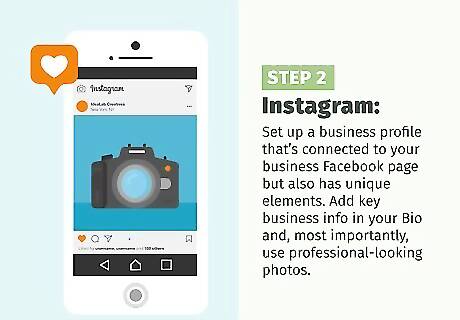
Instagram: Set up a business profile that’s connected to your business Facebook page but also has unique elements. Add key business info in your Bio and, most importantly, use professional-looking photos. In addition: Create an informative but catchy handle (username). Tag your posts and use the Like and Comment buttons to connect with other users. Post Instagram Stories (which last for 24 hours) in order to increase the interactive component of your content. For example, use it to run promotions and contests. Embed Instagram posts in your business website. Keep your posts business-related. Don’t go completely off-brand.

Twitter: Create a Twitter handle (your @username), 160-character profile, and profile photo that work together to support the brand vision for your business client. Post consistently and frequently, at least multiple times per day, but remain on-brand. Also: Use existing hashtags (#) and create your own to expand the reach of your content. Use direct messages (DMs) to interact with customers and other users privately. Set up Twitter polls, live tweets, and Twitter chats to enhance customer interaction. Rely on management software like TweetDeck or Hootsuite to, for instance, schedule tweets in advance.

LinkedIn: Use the platform’s Website Demographics tool to help you create a relevant profile that supports your business client’s vision. It’s also important to use SEO tools to seamlessly weave relevant keywords into your profile. Work on the following as well: Highlight the business’ culture and vision in your postings. Treat LinkedIn more as a content hub than just a job recruitment site. Work with your business client’s management to encourage the use of LinkedIn among employees, but act as the “editorial director” to keep content on-brand. Check the LinkedIn Analytics tab at least once weekly and make strategy adjustments accordingly.
Time Management
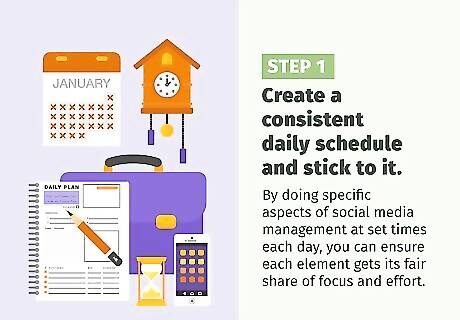
Create a consistent daily schedule and stick to it. As with any other busy job, making a clear daily schedule is a must when managing accounts on multiple platforms. By doing specific aspects of social media management at set times each day, you can ensure each element gets its fair share of focus and effort. A basic morning schedule might include the following: Check-ins: Check each social media account for new activity since last evening. Analytics: Compare data like traffic, posts, and other relevant items. Engagement: Connect with those who have engaged with the various accounts. Curating content: Research and plan new postings on various platforms. Creating content: Produce and post new material. Stopping for a quick lunch and then repeating!
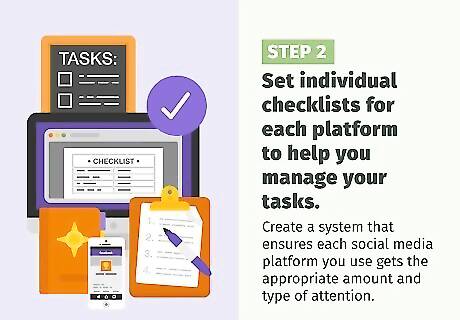
Set individual checklists for each platform to help you manage your tasks. As part of your overall daily schedule, create a system that ensures each social media platform you use gets the appropriate amount and type of attention. Since you have so much on your plate as a social media manager, consider creating an actual checklist that you can go through each day. It’s a low-tech solution, but it can really work! Because each platform is unique, each checklist should also be unique. You may need to post content more frequently to your Instagram account than your YouTube channel, for instance, but respond to comments more frequently on Twitter. Your Facebook checklist, for example, might include: looking over Facebook Insights, which is the platform’s built-in analytics resource; updating your main page with new images and business information; publishing 2-3 video, image, and/or text posts; and setting up a contest to help drive traffic to your page.

Streamline cross-platform activity with social media management software. Software options like Hootsuite and SocialBee (to name just a couple) help simplify critical elements of social media management—things like analytics, planning, content creation, and responding. You can, for instance, post platform-optimized content to multiple social media platforms at once. There are a wide range of free and paid options available, so do your homework and ask around to find the best product for your needs. While social media management software is a valuable tool, don’t rely on it alone to manage your content across platforms. Take the time to visit each platform individually and make sure that your message is getting across the way you want it to.
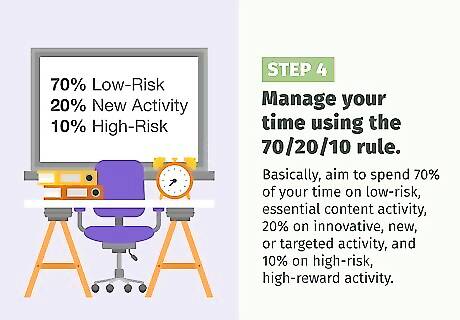
Manage your time using the 70/20/10 rule. This rule supposedly derives from Coca-Cola’s content marketing team, and it’s a simple way to allocate your social media content activity. Basically, aim to spend 70% of your time on low-risk, essential content activity, 20% on innovative, new, or targeted activity, and 10% on high-risk, high-reward activity. Say you’re running a bookstore’s social media channels. Using the 70/20/10 rule, you’d spend 70% of your time on essential tasks like checking analytics, responding to customers, and posting informational content. You might spend 20% of your time creating content regarding a new online ordering and curbside pickup system, and 10% of your time on content that follows the bookstore adventures of an intentionally-ridiculous store mascot—for example, a guy dressed up in a squirrel costume.
Community Engagement
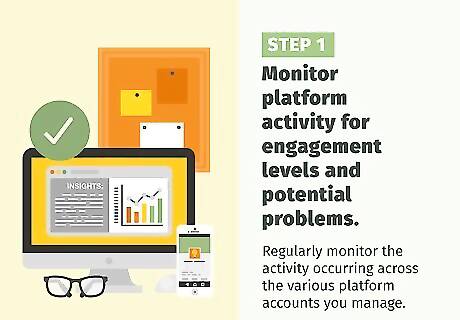
Monitor platform activity for engagement levels and potential problems. In between your content postings and responses, regularly monitor the activity occurring across the various platform accounts you manage. How are other users responding to the content you post? How are they interacting with each other? What adjustments can you make based on this information? For example, say you manage social media for a widget manufacturer and you see frequent questions and discussions among customers about how to choose the proper widget size. You might respond by posting sizing guides and instructional videos.
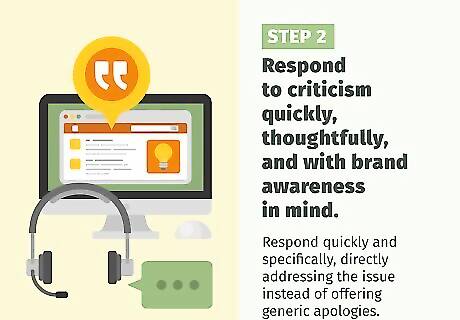
Respond to criticism quickly, thoughtfully, and with brand awareness in mind. You can’t prevent people from lodging complaints and airing grievances on social media. What you can do is engage with criticism in a constructive manner. Respond quickly and specifically, directly addressing the issue instead of offering generic apologies. Show understanding and work to make things right in a way that supports the key values you’re trying to project through social media. For example, if you’re facing a complaint about widget durability, reiterate the company’s satisfaction guarantee and find a way to satisfy the customer. You might also create additional content showcasing the workers’ pride in making high-quality widgets.
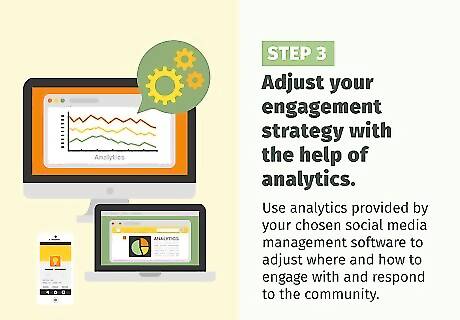
Adjust your engagement strategy with the help of analytics. The world of social media changes fast! If you’ve been managing a business' social media presence for 10 years, for instance, your number-one priority may have shifted from YouTube to Facebook to Twitter to Instagram to TikTok. Use analytics provided by your chosen social media management software to adjust where and how to engage with and respond to the community, especially those in your target demographics. Analytics may show you, for example, that your target audience now responds more positively to short-form video content, as opposed to the text-heavy posts that worked previously. A good social media manager can’t afford to get set in their ways. Be nimble and ready to adjust quickly. Use data and experience to anticipate what’s coming next.
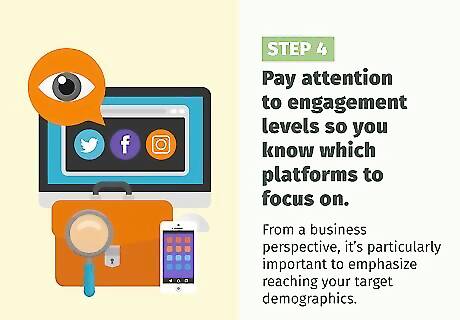
Pay attention to engagement levels so you know which platforms to focus on. Many individuals find it convenient to be on social media, and most businesses find it essential—but that doesn’t mean it’s necessary to have a presence on every social media platform. Each platform has its own unique character, and part of your job as a social media manager is to figure out which platforms should be emphasized, minimized, or avoided. From a business perspective, it’s particularly important to emphasize reaching your target demographics. If you’re looking to reach a younger clientele, for example, it may make more sense to prioritize TikTok over Facebook. Don’t completely ignore any existing accounts, though, even if the platform isn’t an area of focus. It’s better to delete the account than to allow it to languish without regular check-ins and activity.

















Comments
0 comment